Motorola Moto G Review
by Brian Klug on December 18, 2013 2:00 PM EST- Posted in
- Smartphones
- Motorola
- Mobile
- *VA
- Cortex A7
- snapdragon 400
- Moto G
Motorola has embraced relatively stock Android since the launch of Moto X. I originally disliked how the Moto X wasn’t really stock, (cue the philosophical discussion about what stock really means), but truth be told the software preload is devoid of what I don’t like about the skinned, operator-adulterated stuff we’d get otherwise. It strikes perhaps the optimal balance between the two, what works is left intact, what tweaks there are seem to be the bare minimum to appease operators and make the experience better for the majority of users.
The Moto G doesn’t deviate from that formula. At launch, the Moto G comes running Android 4.3, the latest possible version supplied by Qualcomm for the platform inside.
Motorola has promised an update to Android 4.4 KitKat in January (probably near the end of the month), this aligns with the software roadmaps I’ve caught glimpses of. Remember that Motorola is still effectively an OEM and subject to the software release cadences of its silicon suppliers.
The Moto G’s unlocked and operator-free status makes it subject to a bit less than the operator-attached variants of the Moto X I’ve played with, like the AT&T address book and status indicator branding. On the Moto G there’s none of that, just the few tweaks that Motorola has added in, like Device ID, Assist, Migrate, Care, and of course their own camera application.
The delta between the Moto X and G on the software front really comes down to subtraction of features it lacks the hardware for. Specifically the Active Display notifications and interface which used a TI MSP430 and leveraged an AMOLED display, and the always-on voice activation (“OK Google Now”) which used a TI C55x DSP. It’s an easy to understand differentiation point between the two products that I can’t complain about, and although I enjoyed those two features, their absence doesn’t really dilute the software choices that make the Moto G enjoyable.
Moto G also adds an FM radio over Moto X. Inclusion of FM radio is something which remains oddly is absent from most flagship handsets, but a must have on the lower end devices.
Just like the Moto X, the bulk of these applications (Camera, FM radio, Boot Services) are updatable over the Play Store. Motorola has effectively decoupled a bunch of their own first party applications from the normal OTA process.
Again I can’t complain about Motorola’s software strategy for the Moto G. I almost hesitate to make the comparison, but Nexus ends up making flagships that are very competitive on cost in the high end segment, the space Moto G is competing in is entirely different. Having Android 4.3 and the promised upgrade to 4.4 within essentially a month is great, but real proof of Motorola’s commitment will be in continued software support beyond that update.


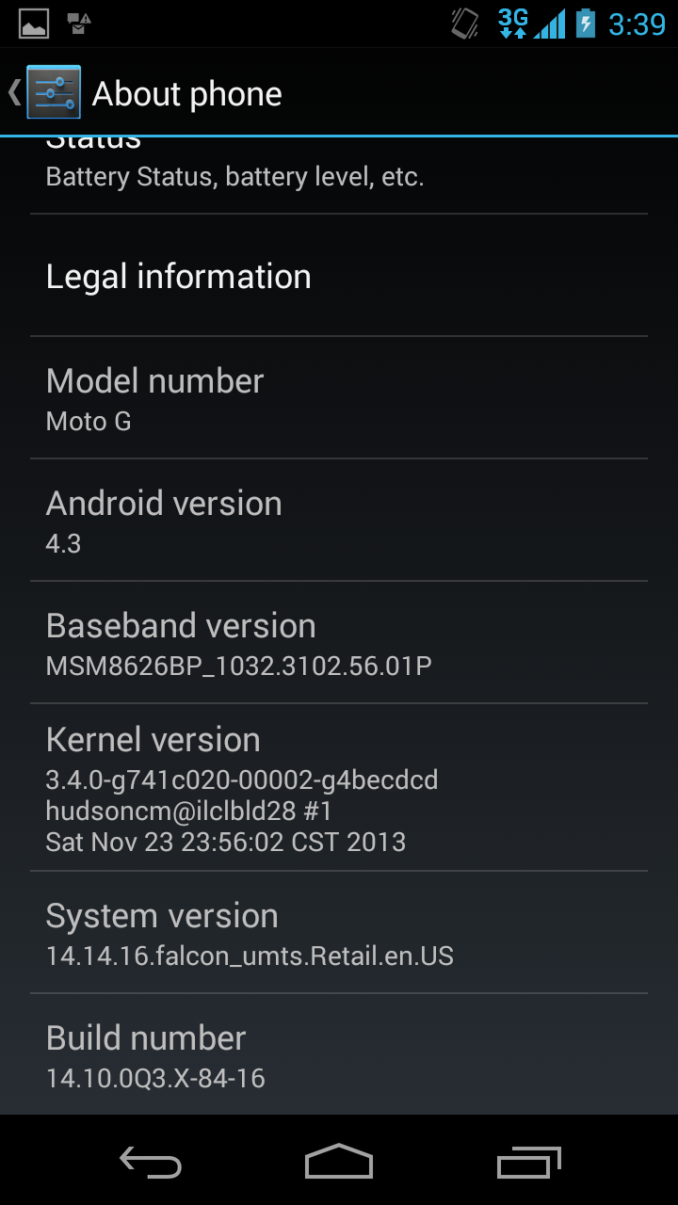
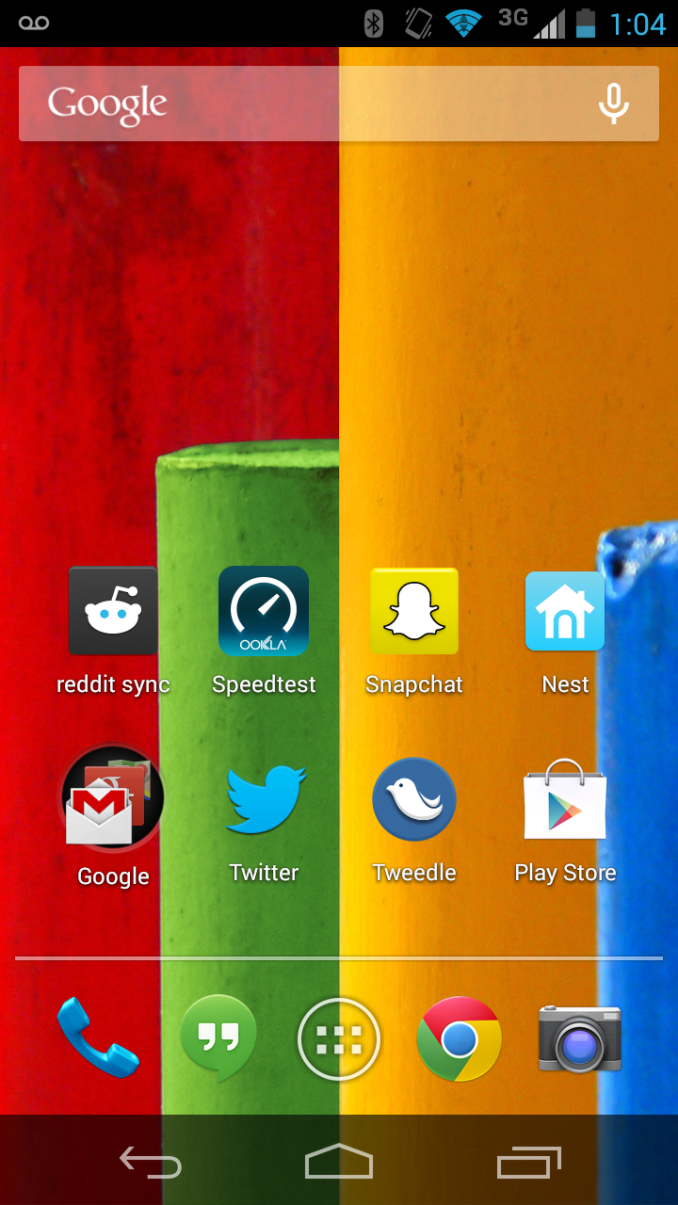
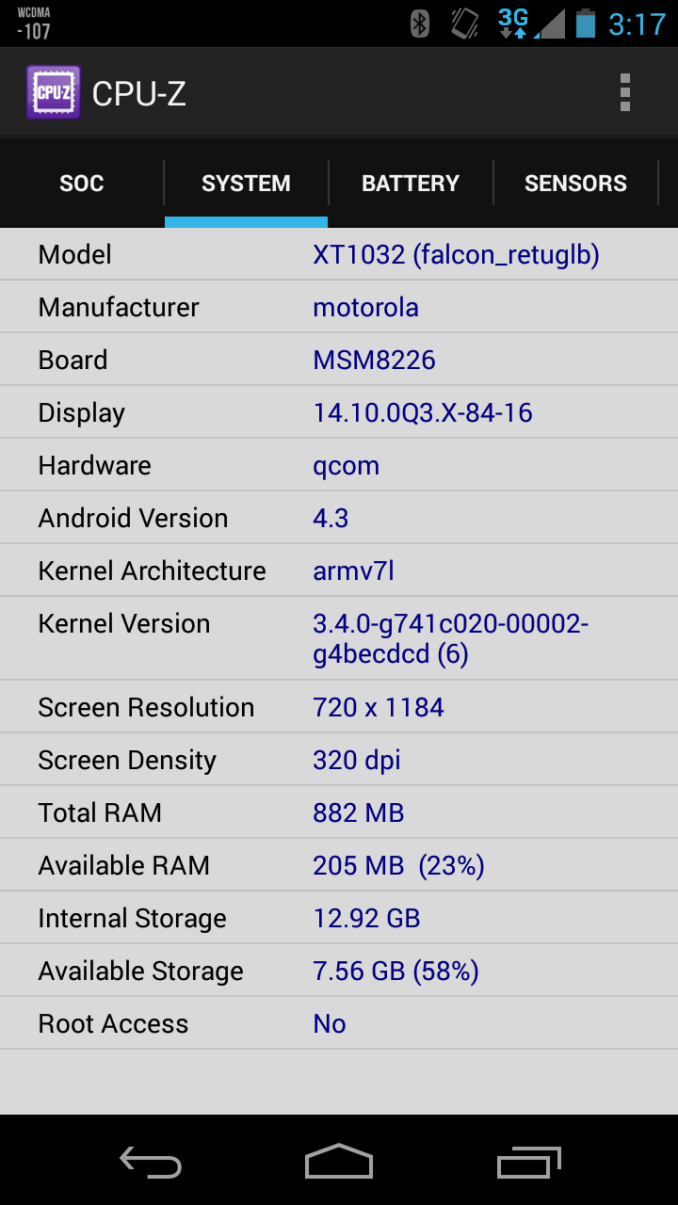
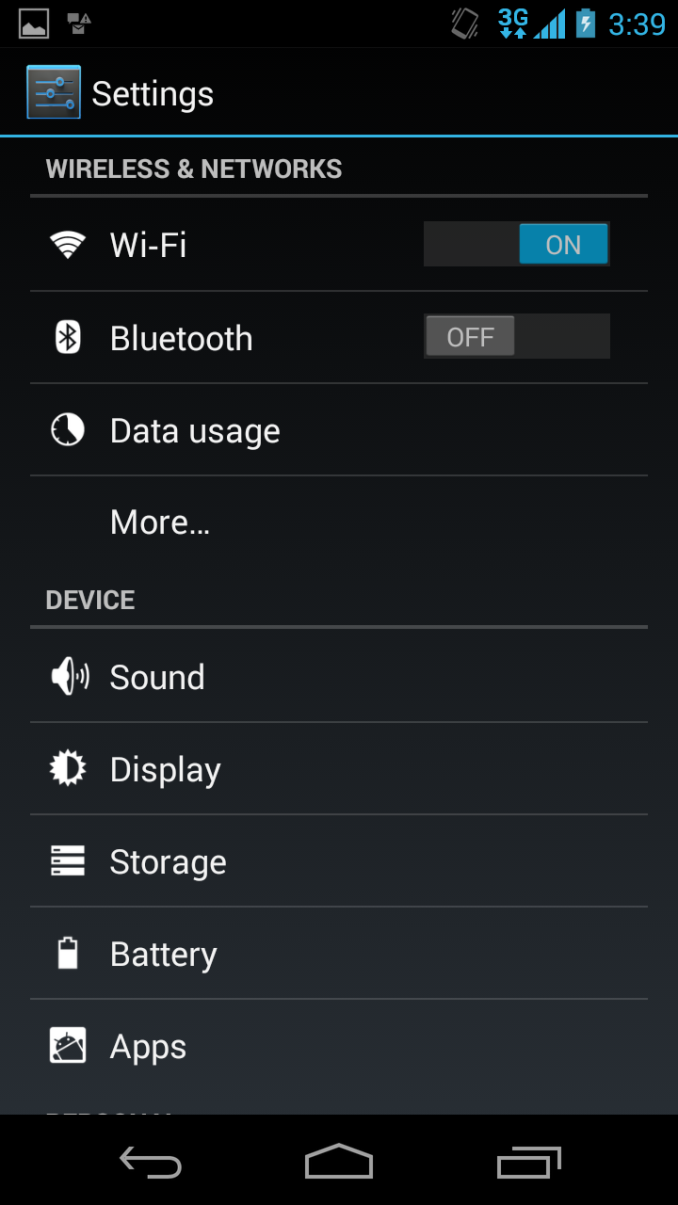
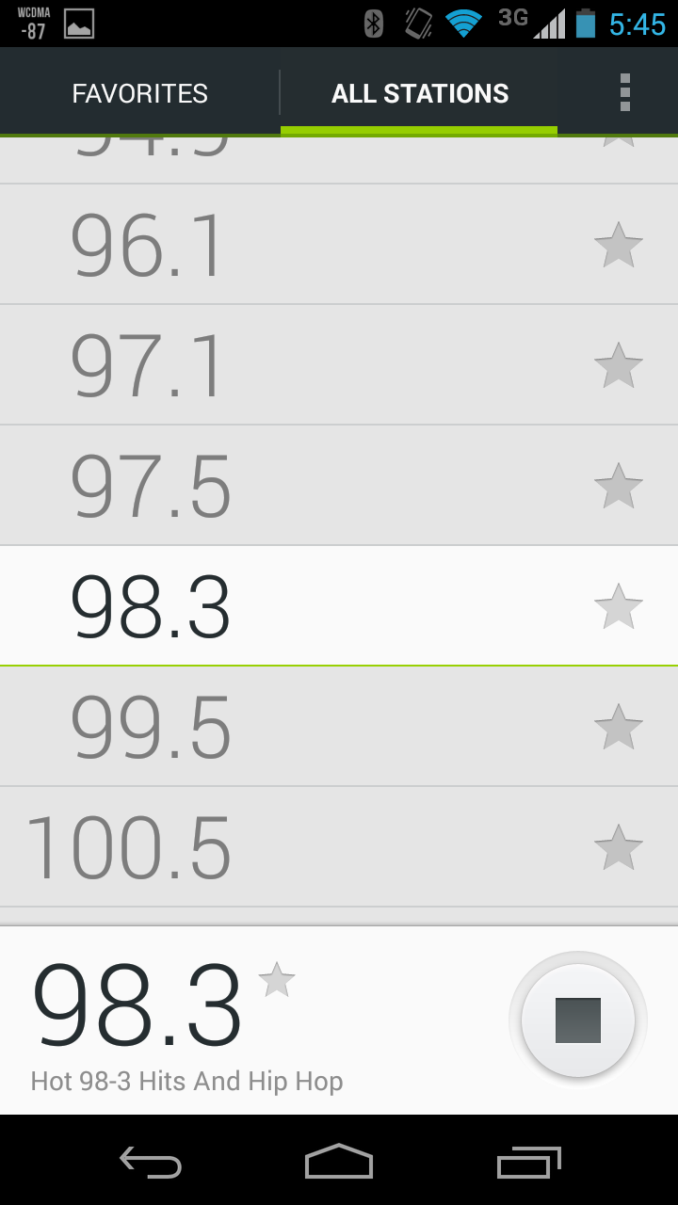
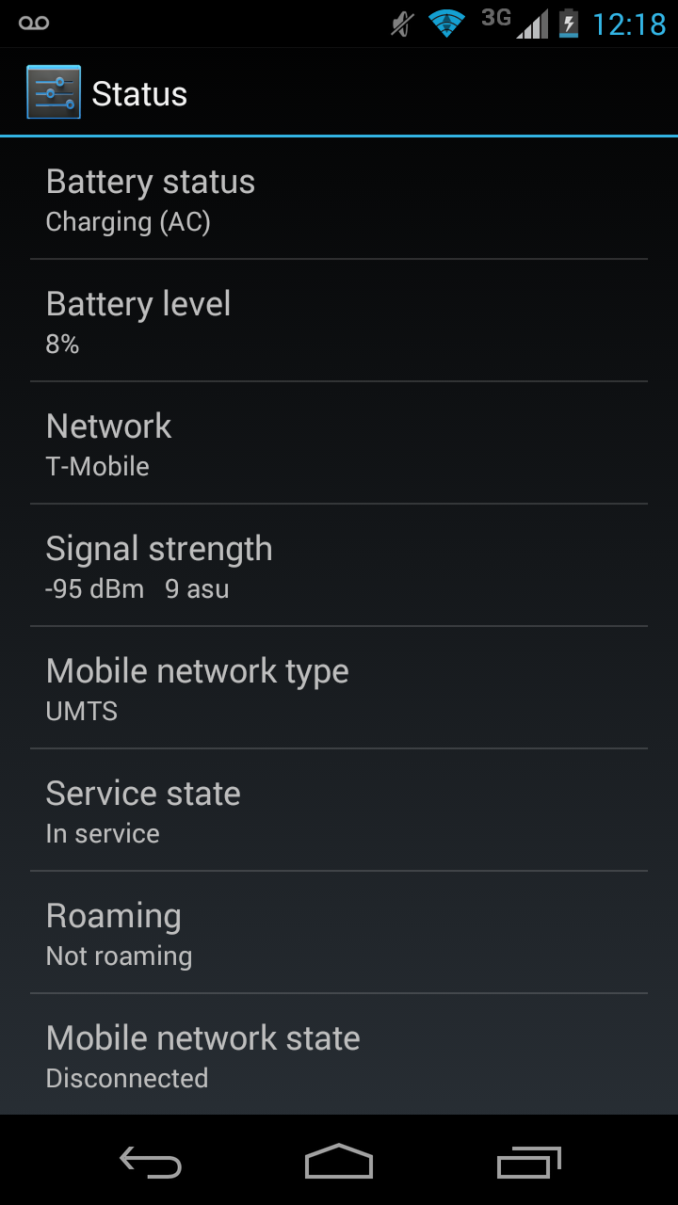








120 Comments
View All Comments
user777 - Friday, January 3, 2014 - link
HTC Desire 300/500/600 models are intended to the same market niche.carancho - Wednesday, December 18, 2013 - link
I'd have even greater doubts when it comes to Motorola's promises. They've eft their previous flagship customers in the cold, as the RAZR HD is still on Android 4.1 and with no indications of ever being updated. The phone was out several months AFTER Google's acquisition, and it compares horrible with the treatment that Samsung and HTC's customers got.Really, Motorola has been promising updates generation after generation, and never shipping them. Do not trust them, you'll get burned.
blanarahul - Wednesday, December 18, 2013 - link
Jelly Bean doesn't need a update that badly.But I guess you can't blame Qualcomm for it since the S3 is already on Android 4.3.
carancho - Thursday, December 19, 2013 - link
The local version that I have of the RAZR HD has several major bugs. At least a revision to 4.1 would be needed.Notice that Googlerola has provided ZERO updates for the RAZR HD in terms of providing updates not available prior to the launch (as was the case with 4.1).
RMSe17 - Wednesday, December 25, 2013 - link
Actually, I wold consider any android pre-4.4 (and thus not having pre-compilation) as completely obsolete.razorsbk - Saturday, December 28, 2013 - link
RAZR HD is officialy supported by CyanogenMod, and CM 10.1 stable is available for it.jeffkibuule - Wednesday, December 18, 2013 - link
If you care about updates, don't get anything besides a Nexus. Simple as that.uhuznaa - Wednesday, December 18, 2013 - link
And even then you can stop caring 18 months later.sprockkets - Wednesday, December 18, 2013 - link
Referring to the Galaxy Nexus? Guess what? The 18 month thing is a red herring.Google has updated all their phones longer than 18 months. That also *includes* the Gnex. That's right, it got 4.3 *19 months* into its life.
TI dissolved its OMAP team. No one can update the drivers for it anymore.
Still won't believe me? Google is replacing free of charge all 1st gen google glasses because it can't be updated. It also uses OMAP.
uhuznaa - Thursday, December 19, 2013 - link
It's Google who said that it will support Nexus phones for 18 months, not me.